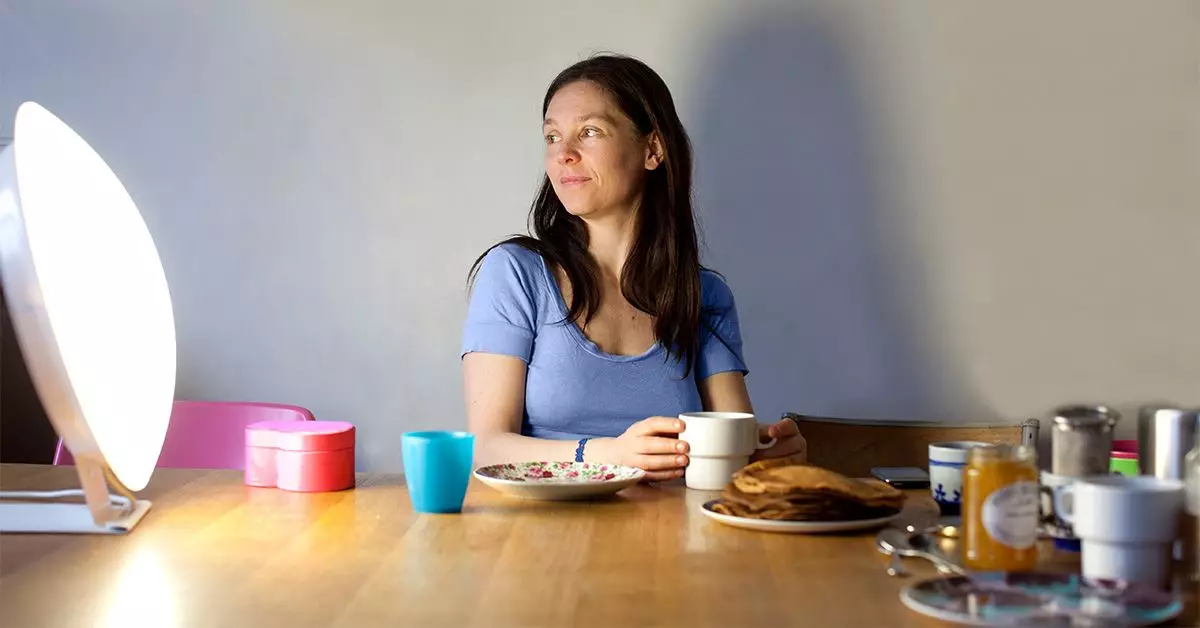As the long, gray days of winter stretch on, many individuals find themselves grappling with a condition commonly referred to as seasonal depression, or more formally, major depressive disorder with a seasonal pattern. This debilitating condition can drastically alter one’s mood, motivation, and overall sense of well-being during the darker months. Though it’s often associated with winter, seasonal depression can also manifest in the summertime, challenging our preconceived notions about light and mood.
The historical term for this affliction, seasonal affective disorder (SAD), aptly encapsulated the struggles many face; however, the broader definition allows a more nuanced understanding of how fluctuations in sunlight can impact our mental health year-round. For those suffering from seasonal depression, hope arrives in various forms—and one of the most promising treatments has emerged from the realm of phototherapy.
How Phototherapy Works
At its core, phototherapy—or light therapy—leverages the simple yet profound effect of light on our biological functioning. As we seek the comfort of sunlit days, phototherapy simulates those sunnier moments using a specialized light box that emits bright light, mimicking the sun’s effects on our bodies. This treatment typically involves sitting near the device for 30 minutes or more daily, ideally in the morning, to reap the maximum benefits.
The science behind light therapy is rooted in its ability to regulate our circadian rhythms, essentially resetting our internal clock. When sunlight is scarce, our body’s production of serotonin—a hormone vital for mood regulation—plummets, while melatonin, a hormone that promotes sleep, spikes. Light therapy works to invert this trend, shifting the balance back towards serotonin.
A pivotal 2024 research review underlines this mechanism, evidencing that exposure to artificial daylight not only improves mood but also enhances sleep quality and mitigates stress. Regular use of light therapy can lead to life-altering results for those affected, making it a worthy consideration for anyone facing the winter blues.
Practical Considerations for Light Therapy
While light therapy is celebrated for its effectiveness and desirability as a first-line treatment, it’s essential to approach this therapy cautiously. Not everyone is a suitable candidate. For instance, individuals with particular eye conditions or light sensitivity disorders must tread carefully, as exposure to bright light could exacerbate their symptoms. It is crucial that anyone considering light therapy engage in open dialogue with a healthcare provider to discuss potential risks and accommodations tailored to their unique needs.
An impressive feature of many modern light therapy devices is their design, typically incorporating screens greater than 200 square inches and filtering out harmful UV rays, ensuring a safer experience. Still, as with any treatment, individuals may encounter side effects ranging from eye strain to headaches, particularly during initial exposure. It’s wise for users to start with shorter sessions and gradually increase them, allowing their bodies to adjust.
Light Therapy as a Complementary Approach
One of the most compelling advantages of light therapy is its versatility. It can stand alone or work in tandem with other treatments like medication. Research endorses the idea that combining treatment modalities can amplify positive effects, which is advantageous for individuals whose conditions are more complex. For those seeking alternatives to medication—especially groups like pregnant individuals or the elderly, who may have specific concerns about pharmacological interventions—light therapy offers a viable solution.
Healthcare systems worldwide are beginning to recognize the benefits of light therapy as a preferred treatment option. For instance, the United Kingdom’s National Health Service (NHS) has advocated its implementation for winter-pattern depression, highlighting its minor side effects compared to traditional antidepressants.
Navigating Access and Affordability
Despite light therapy’s effectiveness, access remains a significant barrier for many. Light boxes can be a hefty investment, often not covered by insurance, leading to difficult decisions for those who stand to benefit the most. This issue magnifies the disparities already prevalent in mental health care, where financial constraints inhibit access to essential therapies.
Advocacy for inclusive mental health resources is paramount. As more individuals discuss their struggles with seasonal depression, the push for affordable, accessible treatment options grows. Organizations and communities must amplify awareness, ensuring that light therapy—the beacon of hope for many—becomes available to all who need it.
The Bottom Line: Embrace the Light
Light therapy illuminates new paths for those navigating the murky waters of seasonal depression. Although it’s not a panacea, its advancements foster optimism for improved mental health care solutions globally. By harnessing the sun’s power in a controlled setting, individuals can take proactive steps towards brighter days, with improved mood and vitality awaiting them in the glow of their therapy lamps.

